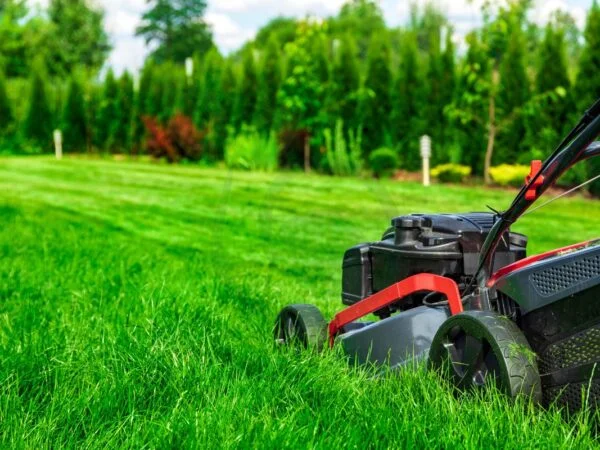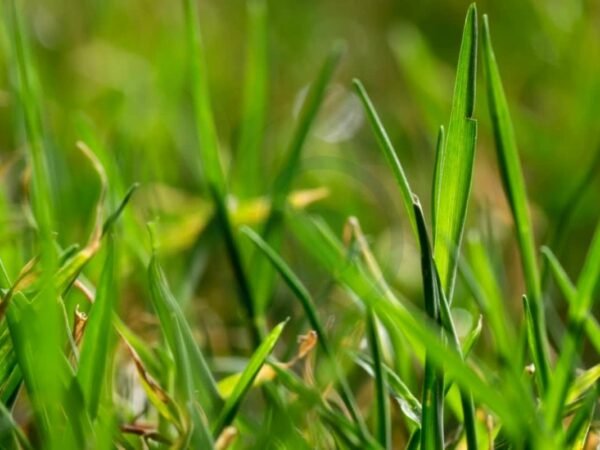Curious about when to mow your lawn after planting grass seed? Timing is key for a lush, healthy lawn. Mowing too soon can hinder growth, while waiting too long may lead to overgrown grass. So, when is the right time to fire up that mower post-seeding? Let's unravel this mystery together. Stay tuned for expert insights on the ideal timeline for mowing after seeding your grass and how it impacts your lawn's health and appearance.
Key Takeaways
- Timing is Key: Wait until the new grass reaches about 3 inches in height before mowing to avoid damaging the delicate young plants.
- First Mow Preparation: Ensure your lawnmower blades are sharp and set at a higher level to prevent tearing or uprooting the new grass.
- Gentle Mowing Techniques: Use a lightweight push mower and mow in different directions each time to prevent compacting the soil and promote even growth.
- Consistent Watering: Keep the new lawn consistently moist but not waterlogged to support healthy root development.
- Early Fertilization: Apply a starter fertilizer after the third mowing to provide essential nutrients for the young grass without overwhelming it.
- Weed Vigilance: Monitor the new lawn for weeds and hand-pull them to prevent competition for resources with the developing grass.
Understanding Mowing Timing
Growth Indicators
Monitor grass seedlings closely to track their growth progress. Look for consistent patterns in how the new turf is developing. Check for uniformity in both height and density across the lawn.
Visual cues play a crucial role in determining when to mow your newly seeded lawn. Take note of any changes in the color and texture of the grass blades. Keep an eye out for any areas that may show uneven growth, indicating potential issues.
Visual Cues
Observe the overall color and texture of your newly seeded lawn as it grows. Pay attention to any patches or spots that seem to be lagging behind in growth. Watch out for any signs of discoloration or wilting among the grass blades and seed.
When considering when to start mowing after planting grass seed, it's essential to establish a mowing threshold based on the grass's growth stage. Determine the optimal height at which you should begin mowing your new lawn to encourage healthy growth of grass seed. Avoid cutting too early, as this can cause stress and damage to the delicate young grass.
Mowing Threshold
To ensure healthy growth, wait until your turf reaches a specific height before initiating any mowing activities. This waiting period allows the grassroots to establish themselves firmly into the soil, promoting stronger overall development by planting the seed.
Avoid rushing into mowing immediately after seeding; give your new lawn some time to settle and grow adequately before subjecting it to regular maintenance routines.
Preparing for First Mow
Lawn Inspection
Inspect the entire lawn carefully to spot any irregularities or potential issues that may affect the mowing process. Identify areas that require special care, such as thin patches or uneven growth. Regularly check your lawn to ensure its overall health and address any concerns promptly.
Mower Settings
Adjust the mower settings based on the recommended guidelines provided by the manufacturer or landscaping experts. Ensure that the cutting height is appropriate for newly seeded grass to prevent stress and damage. Set the mower blades at a suitable level to avoid cutting too short, which can hinder healthy growth.
Blade Sharpness
Maintain sharpness in your mower blades to achieve a clean and precise cut when mowing your lawn. Check the blade sharpness regularly, as dull blades can lead to tearing and damage of grass blades. Ensuring sharp blades will promote better grass health and appearance over time.
Mowing Techniques
Height Adjustment
Adjust mowing height according to seasonal changes for optimal grass maintenance. Ensure cutting height aligns with specific grass types.
Modify cutting height based on the growth of your grass to support healthy turf development. Different grass species may require varied cutting heights for ideal growth.
Follow recommended height adjustments provided for different types of grasses to maintain an attractive and well-manicured lawn.
Mowing Pattern
Vary mowing patterns regularly to prevent soil compaction and unsightly wear patterns on your lawn.
Alternate mowing directions during each session to encourage even growth across the entire lawn area. This practice helps avoid creating ruts or compacted areas in the soil.
Implement diagonal or crisscross mowing patterns periodically for superior results in terms of aesthetics and overall lawn health.
Clipping Management
After each mow, manage grass clippings appropriately to maintain a tidy appearance and promote a healthy lawn environment.
Consider leaving clippings on the freshly mowed lawn as they act as a natural fertilizer, returning nutrients back into the soil.
Dispose of excess clippings by collecting them in a compost pile if necessary, ensuring they are properly recycled and reused beneficially.
Watering New Lawns
Before Mowing
Before mowing your newly planted grass, it's crucial to inspect the lawn area thoroughly. Look for any debris or obstacles that could hinder the mowing process. Clear away rocks, branches, or any other objects that may interfere with the mower.
Prepare your equipment before you begin mowing. Ensure that your lawnmower is in good working condition and properly fueled. Check the blade sharpness and adjust the cutting height as needed. Prioritize safety by wearing appropriate gear like goggles and closed-toe shoes.
After Mowing
After completing the mowing process, take a moment to evaluate the quality of your work. Walk around the lawn and look for any missed spots or areas where cutting may be uneven. Make necessary adjustments to ensure an even and well-maintained lawn appearance.
Regularly check the mower blades after each session to ensure they are clean and free of debris buildup. Cleaning blades not only enhances their longevity but also prevents potential diseases from spreading across your lawn. Clean out any grass clippings stuck in other parts of the equipment for optimal performance.
Fertilizing Young Grass
Initial Feeding
Apply fertilizer according to soil test results right after planting grass seeds. Ensure nutrient levels are adequate for healthy growth. Follow recommended fertilization schedules diligently to achieve optimal results.
Post-Mow Fertilization
Consider applying fertilizer post-mowing sessions to enhance turf health and vitality. Select suitable fertilizers based on the type of grass and prevailing season. Be cautious not to over-fertilize as it can harm the new lawn's development.
Weed Management
Pre-Mow Identification
Identify potential weed issues early to prevent post-mowing complications. Look for any invasive plants that could outcompete your grass. Taking preventive measures against weeds before mowing is crucial for a healthy lawn.
Natural Control Methods
Explore eco-friendly approaches for managing weeds in your lawn. Opt for natural remedies like hand-pulling instead of harsh chemicals. Implement sustainable practices to maintain a balanced and thriving lawn ecosystem.
Minimizing Traffic Impact
Post-Planting Care
After planting grass seed, maintain consistent watering to ensure optimal germination rates. Protect young seedlings by restricting foot traffic. Monitor soil moisture levels regularly.
Post-Mowing Recovery
Allow freshly cut grass time to recover before the next mow. Address any visible stress signs promptly, like discoloration. Implement proper watering techniques post-mow.
Additional Lawn Care Tips
Seasonal Adjustments
Adjust watering frequency based on seasonal weather changes. During hotter months, increase watering to keep the grass healthy and vibrant. In cooler seasons, reduce watering to prevent over-saturation.
Modify mowing schedule according to seasonal growth rates. In spring and summer, when grass grows faster, mow more frequently, about once a week. During fall and winter, you can reduce mowing frequency as grass growth slows down.
Apply appropriate fertilizers depending on seasonal needs. Use a nitrogen-rich fertilizer in the spring to promote green growth. Switch to a balanced fertilizer in the summer for overall health maintenance of the lawn.
Disease Prevention
Identify common lawn diseases early through regular inspections. Look out for signs like brown patches, mold, or discoloration that indicate disease presence. Promptly treat affected areas with suitable remedies.
Implement proper drainage systems to prevent waterlogging. Ensure good soil drainage by fixing any low spots in your yard and avoiding overwatering. Proper drainage helps prevent issues like root rot and fungal infections.
Consult with professionals if unusual symptoms persist despite preventive measures taken at home. Sometimes, certain lawn diseases require expert intervention for accurate diagnosis and effective treatment methods.
Mowing Newly Seeded Lawns
Safe Start Guide
Before mowing newly seeded lawns, prioritize safety. Ensure all necessary precautions are taken to protect yourself and your lawn. Use protective gear like gloves and goggles for added safety when handling equipment. It's crucial to read and understand the manufacturer's instructions before operating any machinery.
Avoiding Common Mistakes
When maintaining a newly seeded lawn, steer clear of common mistakes that can hinder its growth. Overwatering new grass seed can lead to fungal issues, so it's essential to water sparingly and avoid excessive moisture. Prevent scalping by adjusting the mower height appropriately; cutting too low can damage the delicate young grass blades. Refrain from using chemical herbicides on young seedlings as they can cause harm rather than promoting healthy growth.
Summary
Now that you've grasped the essentials of mowing newly seeded lawns, you're equipped to maintain a lush and healthy yard. Remember to time your mowing correctly, prepare adequately, employ proper techniques, and manage weeds effectively. Ensure your lawn receives sufficient water, fertilizer, and minimal foot traffic for optimal growth. By following these guidelines, you'll nurture your new grass into a vibrant carpet that enhances your outdoor space.
Take charge of your lawn care routine by implementing these strategies consistently. Your dedication will yield a beautiful and resilient lawn that you can enjoy year-round. Keep up with the maintenance tasks and adjustments as needed to safeguard the health and appearance of your newly seeded grass. Happy mowing!
Frequently Asked Questions
When is the best time to mow newly planted grass seed?
After planting grass seed, wait until the new grass reaches about 3 inches in height before mowing. This usually takes around 2-3 weeks, allowing the roots to establish. Ensure the soil is not too wet or dry when mowing for optimal results.
How often should I mow a newly seeded lawn?
For a newly seeded lawn, aim to mow once the grass has reached approximately 3 inches in height. Initially, you may need to mow every 5-7 days as the grass establishes. Avoid cutting more than one-third of the blade length at a time.
Is it necessary to use a specific type of mower on newly seeded lawns?
When mowing newly seeded lawns, consider using a sharp rotary mower with adjustable settings. Set the blades at their highest level initially and gradually lower them as the grass grows thicker and stronger. Avoid using heavy machinery that can damage young grass.
Can I apply fertilizer before or after mowing a newly seeded lawn?
It's advisable to wait until after you have completed several rounds of mowing on your newly seeded lawn before applying fertilizer. Mowing helps strengthen roots and allows better absorption of nutrients from fertilizers, promoting healthier growth for your new grass.
Should I follow any specific pattern while mowing a recently seeded lawn?
When mowing a recently seeded lawn, vary your cutting direction each time you mow to prevent soil compaction and encourage upright growth. Avoid turning sharply at the ends of rows to minimize stress on delicate young plants and ensure even development across your lawn.
Image Source: Paid image from CANVA



